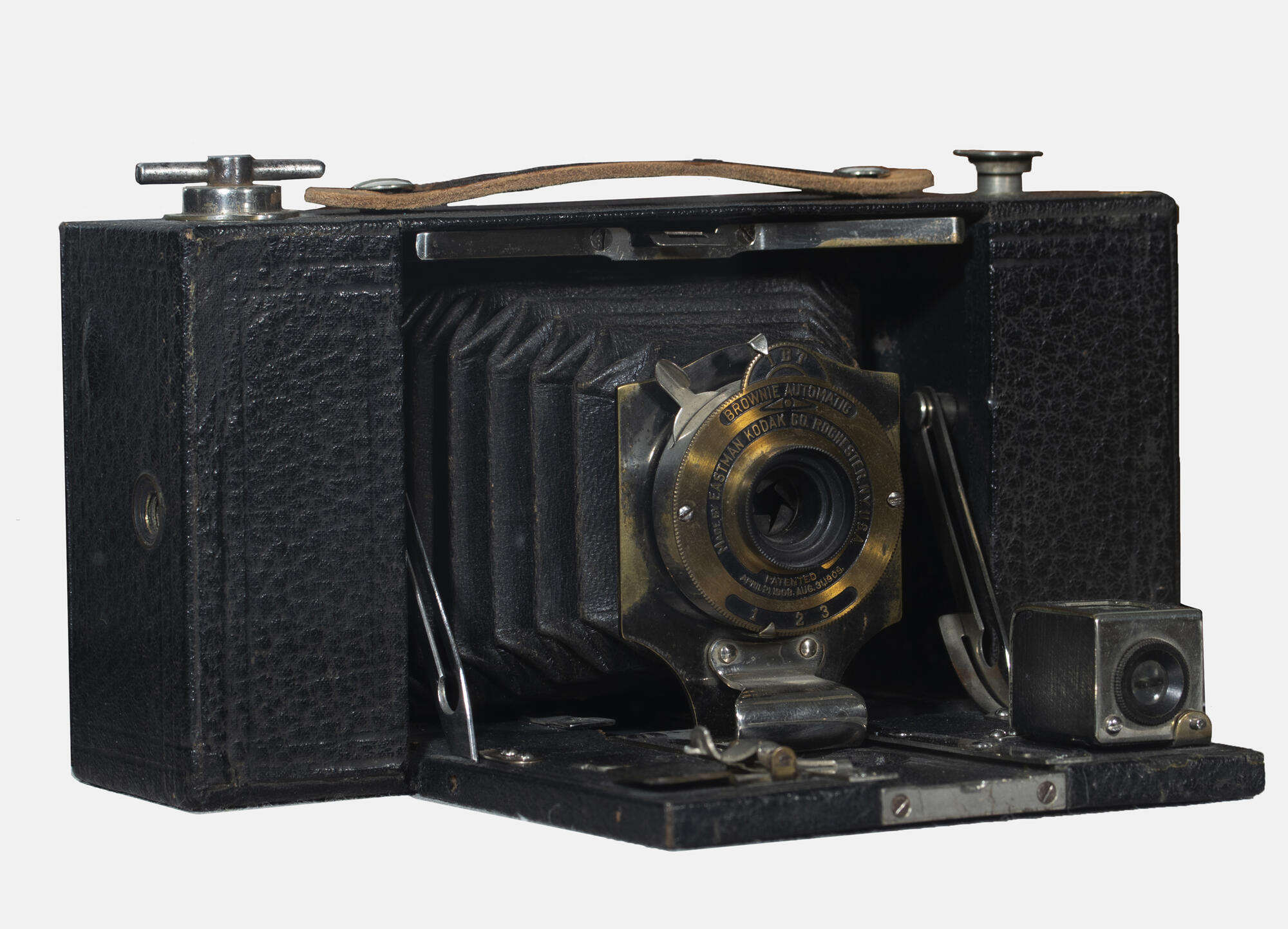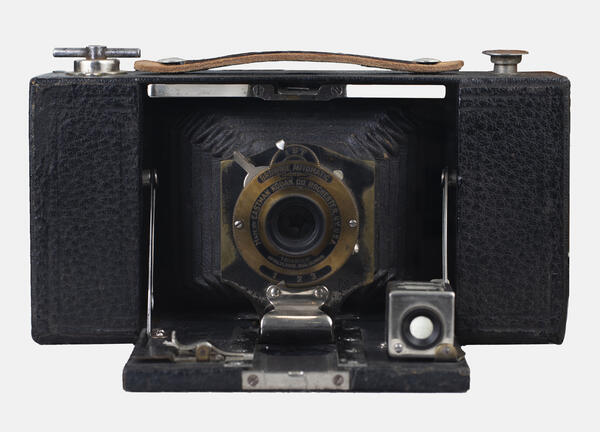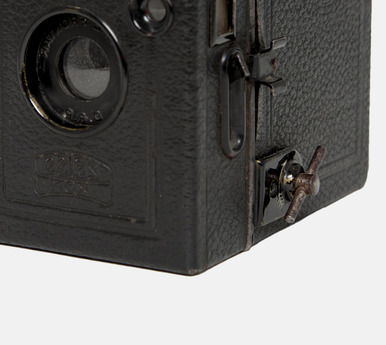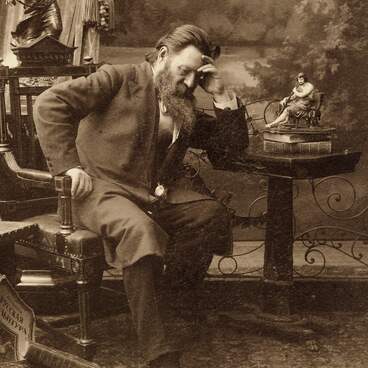The Kodak No. 2A Folding Pocket Brownie camera was introduced by the Eastman Kodak Company in February of 1910. It cost 7 dollars and was designed for medium-format 116 mm film. This film was produced for 85 years — from 1899 to 1984. The frame size on this film was 6.5 by 11 cm, which enabled making photos of the same size by contact printing. This camera is notable because it was created before the universal standardization of photographic equipment and materials was introduced, so the Eastman Kodak Company applied its own classification to the camera’s name.
Operating the Kodak No. 2A Folding Pocket Brownie camera was fairly simple and straightforward. To open it and release the lens, a photographer had to press a hidden button located under the strap on top of the camera.
The focal length was set with a small lever that moved and locked the focusing bellows. Distances of 8 feet (2.5 meters), 25 feet (7.5 meters), and 100 feet (30 meters) could be chosen. It was fairly simple to focus the camera: if a subject was close, a distance of 8 feet would suffice, if it was a little farther away — 25 feet, and if it was a landscape — 100 feet.
The composition of the future shot could be arranged using the rectangular reflecting viewfinder in front of the lens. The viewfinder was set for landscape orientation by default, but it could easily be rotated 90 degrees for portrait images.
The aperture of the simple Brownie meniscus lens
was limited to three values — 1 (f/8), 2 (f/11) and 3 (f/14), which were
selected by moving a metal tab under the lens. Value number 1 was chosen for
ordinary shots, while numbers 2 and 3 were used with slow shutter speeds. The
automatic shutter of the Kodak No. 2A Folding Pocket Brownie camera had three
speeds that could be set by moving the metal tab above the lens: I (instant), B
(manual), and T (timer). The film in the camera was rolled using a knob on the
top plate of the body: the knob was turned until the next frame number appeared
in a window on the back panel.



